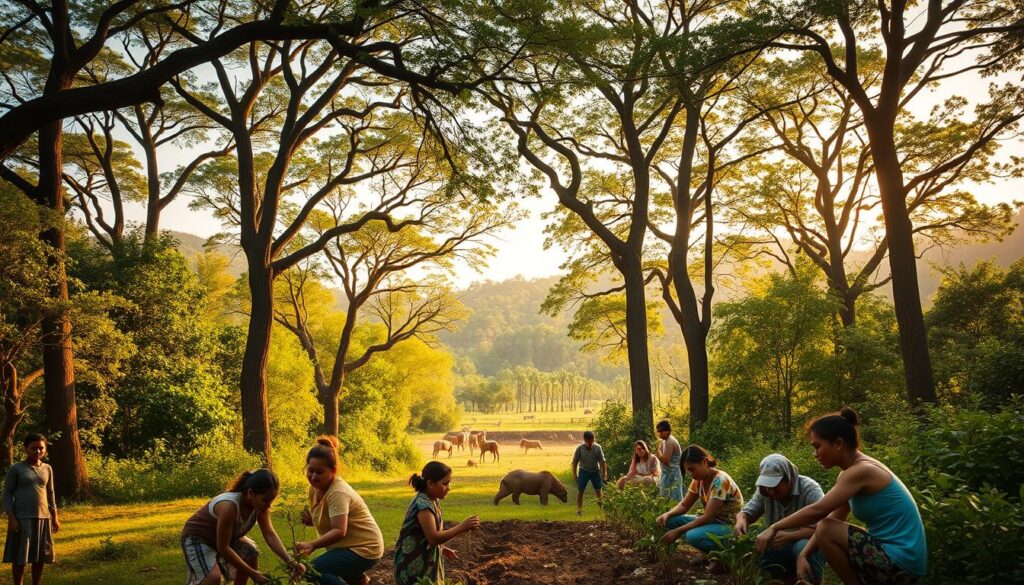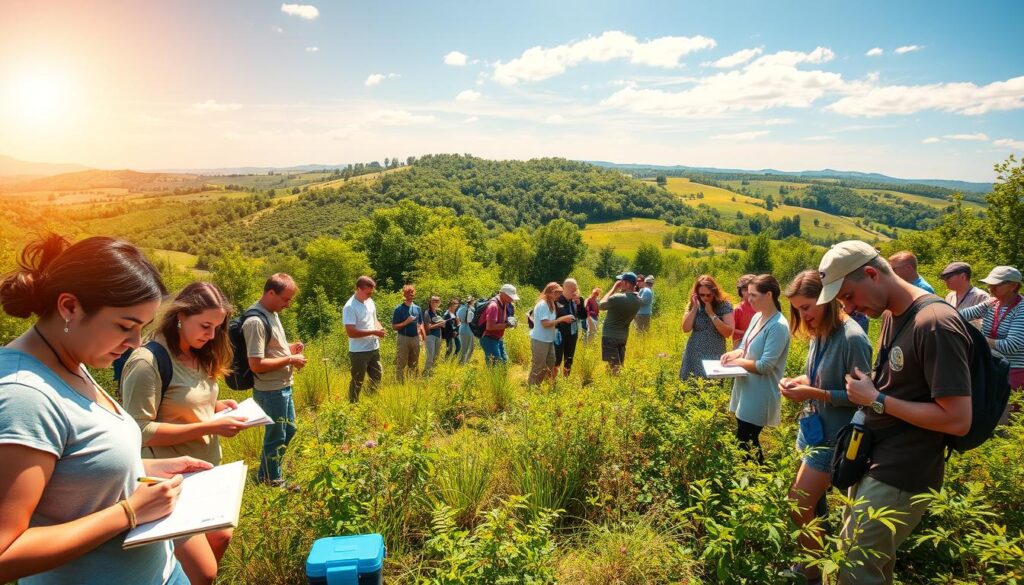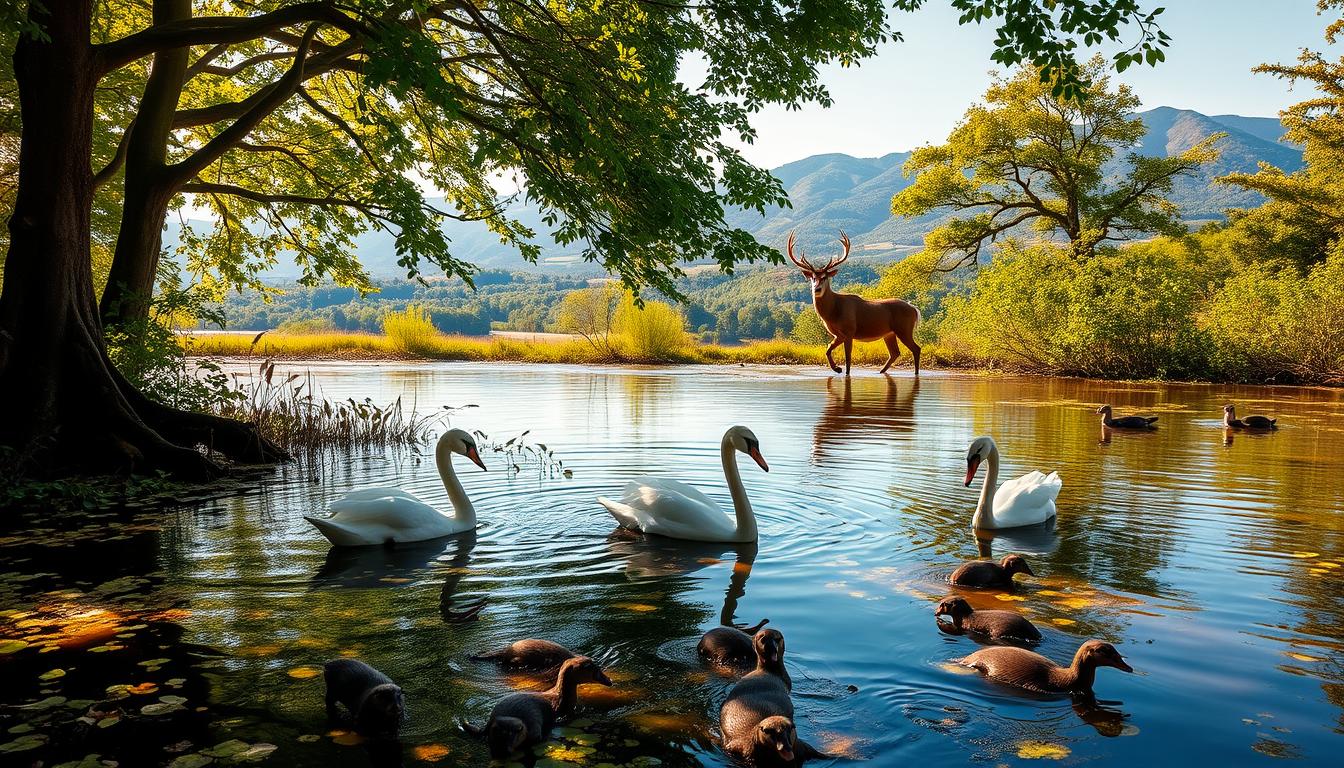How to Support Conservation Without Owning Exotics
Discover ways to provide Conservation Support without owning exotic animals. Learn effective strategies for contributing to conservation efforts today.
As animal lovers, many of us face an ethical dilemma: we want to support wildlife conservation, but we’re aware of the negative impacts of exotic pet ownership. The exotic pet trade is linked to wildlife trafficking, habitat destruction, and species decline worldwide.
A growing movement of conservation-minded individuals is channeling their passion for exotic animals into supportive roles rather than ownership. This shift in approach not only benefits wildlife but also their natural habitats. By understanding the various pathways available for meaningful conservation support, we can create significant positive change for endangered species and ecosystems.
Key Takeaways
- Understand the negative impacts of the exotic pet trade on wildlife conservation.
- Explore alternative ways to support conservation efforts without owning exotics.
- Learn about the growing movement of conservation-minded individuals.
- Discover pathways for meaningful conservation support.
- Recognize the benefits of prioritizing animal welfare and habitat preservation.
Understanding Conservation Support
As the world grapples with environmental issues, understanding conservation support becomes increasingly important. Conservation efforts are crucial for maintaining healthy ecosystems and supporting biodiversity.
Conservation support encompasses a range of activities aimed at preserving natural habitats and protecting endangered species. By understanding the impact of human actions on the environment, individuals can make informed choices that support conservation.
The Impact of Exotic Pet Ownership
Exotic pet ownership can have a significant negative impact on conservation efforts. The demand for exotic pets can lead to the depletion of wild populations and disrupt ecosystems. Reducing the demand for exotic pets can help mitigate this issue.
Why Conservation Matters
Conservation matters because it helps maintain the balance of ecosystems, supports biodiversity, and ensures the long-term health of the planet. Effective conservation efforts can also contribute to human well-being by protecting natural resources and mitigating the effects of climate change.
Some key aspects of conservation support include:
- Exploring the critical role of biodiversity in maintaining healthy ecosystems worldwide.
- Understanding how species preservation supports environmental stability and human well-being.
- Learning about the interconnected nature of ecosystems and the impact of species loss.
- Recognizing the importance of protecting entire habitats and ecological processes.
- Discovering how conservation initiatives align with sustainable development goals, benefiting both wildlife and human communities.
By supporting conservation efforts, individuals can contribute to positive change and help protect the environment. Conservation support is essential for creating a sustainable future.

Participate in Citizen Science Projects
Engaging in citizen science projects is a powerful way to contribute to conservation efforts. These initiatives allow individuals to participate in meaningful research activities that support conservation science.
Citizen science projects often involve wildlife monitoring programs and the use of mobile apps for conservation. For instance, programs like iNaturalist enable users to record observations of plants and wildlife, contributing to a broader understanding of biodiversity.
Wildlife Monitoring Programs
Wildlife monitoring programs are a crucial aspect of citizen science. They involve activities such as taking a ‘Coastie’ – a photo of the coast – to help scientists monitor coastal changes over time.
Using Mobile Apps for Conservation
Mobile apps like iNaturalist, eBird, and Project Noah connect user observations with global databases, facilitating science and research. These apps enable users to contribute to conservation efforts through activities such as photo documentation and geolocation mapping.
Some ways to engage with citizen science through mobile apps include:
- Discovering user-friendly applications designed for citizen science contributions.
- Learning how apps connect observations to global databases, enhancing research and conservation.
- Understanding the role of photo documentation in verifying species identification.
- Exploring how geolocation features help map biodiversity patterns.
- Finding out how gamification elements make scientific contributions engaging.
| App | Purpose | Features |
|---|---|---|
| iNaturalist | Record plant and wildlife observations | Photo documentation, geolocation |
| eBird | Monitor bird populations | Real-time data submission, species identification |
| Project Noah | Contribute to wildlife research | Image and data sharing, species mapping |

Volunteer for Conservation Organizations
For those looking to support conservation without owning exotic pets, volunteering is a viable and impactful option. Various organizations offer a range of activities that cater to different interests and skills.
Local Conservation Opportunities
Local projects provide hands-on experience and the chance to make a tangible difference. Activities may include organizing guided hikes, monitoring species at risk, or participating in shore cleanups.
Remote and Virtual Volunteering
Digital platforms have opened up opportunities for remote volunteering. Tasks can include data processing, research assistance, and digital communications support. Trained volunteers can analyze remote sensing and satellite imagery from anywhere, while translation services help organizations communicate across language barriers.
- Data processing and research assistance can be done remotely, supporting conservation efforts.
- Digital communications, including graphic design and web development, can enhance an organization’s online presence.
- Specialized skills like legal expertise can provide critical support to conservation organizations.
Financial Conservation Support
Financial conservation support is a vital component in the quest to protect our planet’s biodiversity. By providing financial backing, individuals and organizations can significantly contribute to conservation efforts around the world.
One effective way to offer financial support is through donations to reputable conservation organizations. These organizations use funds to support various conservation projects, from protecting endangered species to preserving natural habitats.
Donating to Reputable Organizations
Donating to well-established conservation organizations is a direct way to support conservation. Conservation International, for example, has been a pioneer in conservation efforts, having launched the world’s first debt-for-conservation swap in 1987.
Supporting Conservation Through Purchases
Consumers can also support conservation through their purchasing decisions. By choosing products that are certified as sustainably sourced, individuals can promote eco-friendly practices. Certifications like Rainforest Alliance, Forest Stewardship Council, and Marine Stewardship Council ensure that products meet rigorous environmental standards.
- Discover how consumer choices can directly support conservation through certified sustainable products.
- Learn about wildlife-friendly certifications that promote sustainable practices.
- Understand the role of cause-related marketing partnerships between businesses and conservation organizations.
Moreover, purchasing merchandise from conservation organizations can generate funding while raising awareness about conservation issues. For instance, Parks Canada reinvests 100% of its profits from the sale of official merchandise into conservation projects.
“Making nature more valuable alive than destroyed is the equation we are changing.” – Conservation International
It’s also crucial to be aware of greenwashing and to distinguish genuine conservation support from marketing tactics. By being informed consumers, individuals can ensure their financial support is making a real difference in conservation efforts.
Education and Awareness Initiatives
Education is key to supporting conservation efforts without owning exotic animals. By learning about conservation projects and the specialists working to protect plants and species at risk, individuals can gain a deeper understanding of the importance of conservation.
Learning About Conservation Science
Conservation science involves collaboration with Indigenous knowledge holders and international scientific communities. Parks Canada works with these groups to protect species and ecosystems, providing valuable science-based insights into conservation.
Sharing Conservation Information
Sharing credible information about conservation is crucial for raising awareness. Effective strategies include using social media platforms to amplify success stories and personal experiences, making conservation issues more relatable and compelling. By sharing information through various channels, individuals can help promote a culture of conservation.
- Discover ways to communicate conservation messages effectively within your community.
- Learn to use social media to amplify credible conservation stories.
- Understand the power of personal storytelling in making conservation relatable.
- Explore the impact of visual communication on emotional connections to conservation causes.
- Find out how to address misconceptions with evidence-based information.
Community-Based Conservation Activities
Community-based conservation activities offer a powerful way to contribute to environmental protection. These initiatives not only support local ecosystems but also foster a sense of community among participants.
By engaging in conservation activities, individuals can contribute to the preservation of natural habitats and biodiversity. This collective effort is crucial for the success of broader conservation goals.
Participating in Local Clean-ups
Local clean-up initiatives are a vital part of community-based conservation. These events bring people together to restore natural areas, promoting both environmental health and community cohesion.
Joining Conservation Communities
Joining conservation communities provides individuals with opportunities for knowledge sharing, mentorship, and collective impact. These communities, both formal and informal, focus on specific habitats, species, or conservation approaches, amplifying individual efforts through coordination and shared resources.
Conservation International’s approach emphasizes the importance of respecting human rights and supporting local communities. By doing so, conservation efforts become more effective and sustainable.
| Conservation Activities | Benefits | Impact |
|---|---|---|
| Local Clean-ups | Community Engagement | Improved Environmental Health |
| Conservation Communities | Knowledge Sharing | Collective Conservation Impact |
| Community-Based Initiatives | Support for Local Ecosystems | Preservation of Biodiversity |
Conclusion: Making a Difference Without Exotic Ownership
Individuals can drive meaningful change in wildlife conservation by exploring various support pathways. By engaging in citizen science projects, volunteering, and making financial contributions, people can collectively drive systemic change. This multifaceted approach to conservation support not only benefits wildlife but also fosters personal fulfillment. Through continued research and engagement, conservation efforts can create a lasting legacy, ultimately maximizing the positive impact on threatened species and promoting a culture of environmental stewardship.



